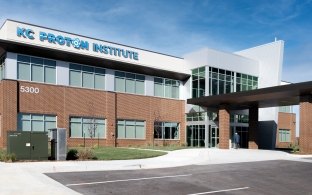The Digital Delivery Advantage
Improving project outcomes with new and proven technologies


Across the design and construction industry, the digital transformation is on. Interest in emerging technologies — including everything from Artificial Intelligence (AI) and robotics to enhanced visualization — is on the rise for good reason. By overcoming its historically low level of digitalization, our industry can transform project life cycle processes to be more efficient, less costly, safer and more resilient. Data analytics reveal new insights never before possible, leading to better decision making and greater certainty in project outcomes. It’s a transformation from design through delivery to long-term operation.
According to The B1M, the top five construction technology trends in 2024 are digital collaboration, AI, robotics, 3D printing and digital twins. Indeed, digital twin technology is at the forefront of advancing the digital transformation movement within the A/E/C industry — building upon the foundation of building information modeling (BIM) and taking a dynamic approach to data insights. In many ways, BIM has unlocked the gates to digital transformation and emerging technologies are now paving the way to create digital twins of the built environment — connecting them to their physical asset counterparts more easily than ever before. Digital twins are fast becoming a valued solution for solving many challenges for building owners that value data, anticipating problems before they ever occur.
A seamless integration of the virtual and physical worlds, a digital twin is a dynamic, real-time digital replica of a physical asset. Driven by real-time operational data, a digital twin can simulate situations, predict outcomes, prevent problems and improve performance throughout the project life cycle. A digital twin can connect to an integrated workspace management system and keep asset owners informed of whatever data points matter most to them. This includes energy consumption, monitoring a wide variety of sensors and preventative maintenance notifications.
Digital twin technology can also help accelerate project delivery, as well as improve project resilience, sustainability and life cycle management. In addition, embracing the best practices of digital transformation and digital twins is attracting a new generation of tech-savvy talent to the design and building industry.
But not all digital twins are made the same. What one owner values might look quite different from the preferences of another. So many ask, what is the entry point and best practices to help define a high-quality digital twin for an end user? Let’s take a closer look.
Best practices for digital transformation
The key to digital transformation is integrating people, processes and technology throughout the project life cycle. Begin with the end in mind, then create a comprehensive digital delivery (BIM) execution plan that aligns stakeholder goals, milestones and deliverables. Earlier and greater collaboration among stakeholders enhances efficiency and communication. And data is the catalyst that makes such close collaboration possible — mitigating risk by improving decision making among all stakeholders.
One strategy that can potentially enhance the effectiveness of a dynamic digital twin is to integrate AI technology. AI can be useful for analyzing tremendous amounts of data to reveal new learning that can drive higher performance. The key is having a targeted strategy for yielding a focused, definable outcome — rather than employing AI for AI’s sake.
For AI to succeed, it must be driven by established standards with human experts overseeing and performing quality reviews to ensure the technology is yielding verifiable and actionable insights. Many emerging technology providers tout “AI solutions” that are little more than automated processes sending information from one point to another. In contrast, true AI reveals new learning.
This is why emerging technologies such as AI must be vetted before deployment. Across the country, McCarthy subject matter experts are conducting AI research, helping to dispel the myths around AI capabilities and identifying opportunities that generate productive, real-world results.
The three key data questions
Should your digital transformation include dynamic digital twin technology? Explore the possibilities by answering three key data questions:
- What data do you need? (Understand the Challenge)
- Who will use it? (Define the Solution)
- How will it be received and maintained? (Ensure Accuracy)
To help answer these questions, the McCarthy Virtual Design & Construction team conducts digital twin workshops with three key objectives:
- Defining user data standards and requirements
- Determining pathways and vehicles for data exchange
- Establishing the end deliverables package
How every stakeholder benefits
Across the project life cycle, stakeholders see clear advantages by embracing digital transformation and digital twins technology:
- Owners: BIM-driven data reveals new insights for creating a great end user experience across an asset’s life cycle—from design to long-term operation. A properly developed digital twin drives more informed decisions and maximizes value and ROI for long-term asset operations.
- Designers: BIM data standards create consistency and a framework for success project after project. With BIM and digital twin data as the foundation, designers can more effectively help owners achieve their vision for long-term asset data management.
- Trade partners: Accurate as-built drawings, models and asset data are critical to efficient facility maintenance and fostering the long-term trust among owners that leads to future projects.
- Suppliers, vendors and manufacturers: Reliable product data is essential for maintenance success downstream. Models, shop drawings and O&M data yield powerful insights and create a lasting record of facility performance.
Leading the way
Today, the pressures on meeting cost, quality, schedule and safety goals have never been greater. Embracing digital transformation is a proven strategy for addressing these challenges. McCarthy is at the forefront of industry initiatives to set forth BIM, digital twin and AI standards, processes and deliverables.
Case in point is our leadership role and investment with the National Institute of Building Sciences’ (NIBS) BIM Council and the NIBS Digital Twin Integration Subcommittee (DTI-S). A current key objective is defining the relationship of digital twin fundamentals, standards and processes with current BIM industry best practices, as established in the National BIM Standard (NBIMS). For more information on the activities at NIBS, visit https://engage.nibs.org/home.
McCarthy is committed to accelerating digital transformation and integration by creating a culture of ‘integrated virtual builders’ — leveraging data analytics, machine learning, robotics and craft expertise from across the country. The result: stronger collaboration, more effective communication — and the superior results that lead to great experiences for everyone.
Is digital twin technology right for your next project? Leveraging best practices and starting with the three key data questions outlined earlier, McCarthy can help you determine how it may be a key component of your digital transformation strategy. For more information, visit https://www.mccarthy.com/projects/virtual-design-construction.
ABOUT THE AUTHOR
As Senior VDC Director at McCarthy, Alex Belkofer is responsible for the overall strategy, implementation and execution of the virtual design and construction (VDC) lifecycle process among all project stakeholders. From corporate office to construction site, the VDC Team promotes, trains and guides project teams through BIM-enabled uses and workflows over the course of a building’s project lifecycle. Alex works closely with project directors, managers, owners and A/E partners to establish early expectations and project deliverables at all project phases. Alex serves in steering the McCarthy’s National VDC Leadership Core Team to enhance the delivery and consistency of BIM-enabled strategies, best practices and digital transformation company-wide.









